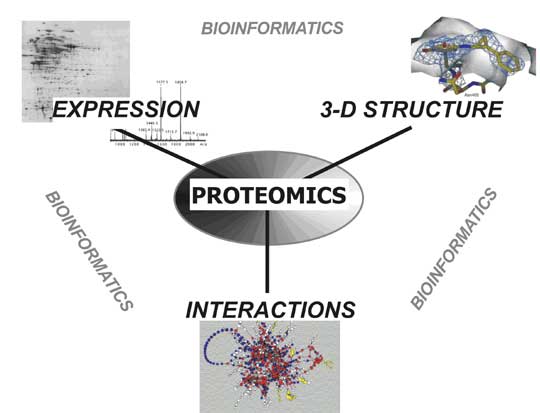Key Difference – Proteomics vs Transcriptomics
The omic technology is a current trend, where the different biomolecules of an organism are looked upon as a whole collection with regards to its properties and functions. The omic technology has a wide array of applications. The different omics of a biological sample includes genomics, proteomics, transcriptomics and metabolomics. Proteomics involves the complete study of all proteins in a living organism. It is defined as the set of all expressed proteins in an organism, its structural and functional properties. The complete set of proteins, therefore, form the proteome. Transcriptomics is the complete study of all the messenger RNA (mRNA) molecules present in a living organism. Thus, transcriptomics deals with the genes that are actively expressed in a living organism. The total set of mRNA in a living organism is referred to as the transcriptome. The key difference between Proteomics and Transcriptomics is based on the type of the biomolecule. In proteomics, the total set of expressed proteins in a living organism is studied whereas, in transcriptomics, the total mRNA of a living organism is studied.
CONTENTS
1. Overview and Key Difference
2. What is Proteomics
3. What is Transcriptomics
4. Similarities Between Proteomics and Transcriptomics
5. Side by Side Comparison – Proteomics vs Transcriptomics in Tabular Form
6. Summary
What is Proteomics?
The term proteomics was coined in the year 1995 and was initially defined as the total protein complement in a cell, tissue or an organism. With the advancement in proteomic studies, it was then modified to be considered as an umbrella term in which many study fields were included. Currently, under the topic proteomics, the structure, orientation, functions, its interactions, its modifications, its applications and the importance of proteins are studied. Therefore, much research is conducted in the field of proteomics at present.
The first proteomic studies were done to identify the protein content in Escherichia coli. The mapping of the total protein content was done using two dimensional (2D) gels. Upon the success of this, scientists moved on to characterizing the total protein contents in animals such as guinea pigs and mice. At present, human protein mapping is done using 2D gel electrophoresis.
Applications of Proteomics
There are many advantages of studying proteomics, as proteins are the governing molecules of most of the activity due to the catalyst property of proteins. Thus, the study of whole proteins can provide information regarding the health status of an organism. Some applications are;

Figure 01: Proteomics
There are different techniques involved in proteomics
What is Transcriptomics?
The transcriptome term is coined a recently. The Transcriptomics is the study of the total mRNA content of an organism. The total mRNA is the expressed DNA in a living organism or a cell. The complete collection of mRNA is referred to as a transcriptome.
The steps towards analyzing the transcriptome include,
Microarray technology is one common way of identifying the transcriptome of an organism. The microarray technique involves a probe plate with the complementary strands of the transcriptome. Upon hybridization, the mRNA present in the organism or cells can be characterized.

Figure 02: Transcriptomic Techniques
Transcriptomics is now widely used in the medical field. Disease diagnostics and disease profiling are main fields in which Transcriptomics is used. By analyzing a transcriptome of an organism, foreign mRNA can be identified, and if there are any infections, it can be identified. The non – coding RNA can be separated using transcriptomic technologies. And also the expression of genes under different environmental stresses can be monitored.
What are the Similarities Between Proteomics and Transcriptomics?
- Both form a part of the concept of omic technology.
- Both are used in disease diagnostics and disease characterization of an organism.
- Both study areas involved extraction of the biomolecule, separation of the biomolecule and sequencing steps.
What is the Difference Between Proteomics and Transcriptomics?
Protemics vs Transcriptomics | |
| Proteomics involves the complete study of all proteins in a living organism. | Transcriptomics is the complete study of all the messenger RNA (mRNA) molecules present in a living organism. |
| Studied Bio Molecule Type | |
| Proteins are studied in proteomics. | mRNA are studied in transcriptomics. |
| Factors Studied | |
| Structure, function, interactions, modifications and applications of the proteins are studied in proteomics. | Sequence structure, interactions with environment and applications of the mRNA are studied in transcriptomics. |
Summary – Proteomics vs Transcriptomics
Omics play an important role in the field of life sciences. Proteomics refers to the study of the proteome which forms the complete collections of proteins in a cell or an organism. Transcriptomics refers to the study of the transcriptome which is the complete set of expressed DNA that is in the form of mRNA. The two study areas, proteomics and transcriptomics, were derived after the introduction of genomics and currently used widely in medical diagnostics and in characterization and screening of organisms. This is the difference between proteomics and transcriptomics.
Download the PDF of Proteomics vs Transcriptomics
You can download the PDF version of this article and use it for offline purposes as per citation note. Please download the PDF version here: Difference Between Proteomics and Transcriptomics
Reference:
1.Horgan, Richard P, and Louise C Kenny. “’Omic’ technologies: genomics, transcriptomics, proteomics and metabolomics.” The Obstetrician &Gynaecologist, Blackwell Publishing Inc, 18 July 2011. Available here
2.Graves, Paul R., and Timothy A. J. Haystead. “Molecular Biologist’s Guide to Proteomics.” Microbiology and Molecular Biology Reviews, American Society for Microbiology, Mar. 2002. Available here
3.Lowe, Rohan, et al. “Transcriptomics technologies.” PLoS Computational Biology, Public Library of Science, May 2017. Available here
Image Courtesy:
1.’Proteomics’By Xxl7441 at English Wikibooks – Transferred from en.wikibooks to Commons., (Public Domain) via Commons Wikimedia
2.’Microarray and sequencing flow cell’By Thomas Shafee – Own work, (CC BY 4.0) via Commons Wikimedia
ncG1vNJzZmivp6x7pbXFn5yrnZ6YsqOx07CcnqZemLyue8OinZ%2Bdopq7pLGMm5ytr5Wau2680airnqednrC0ecCnm2auo2LBs63NrJqroaCpvK61wqxm